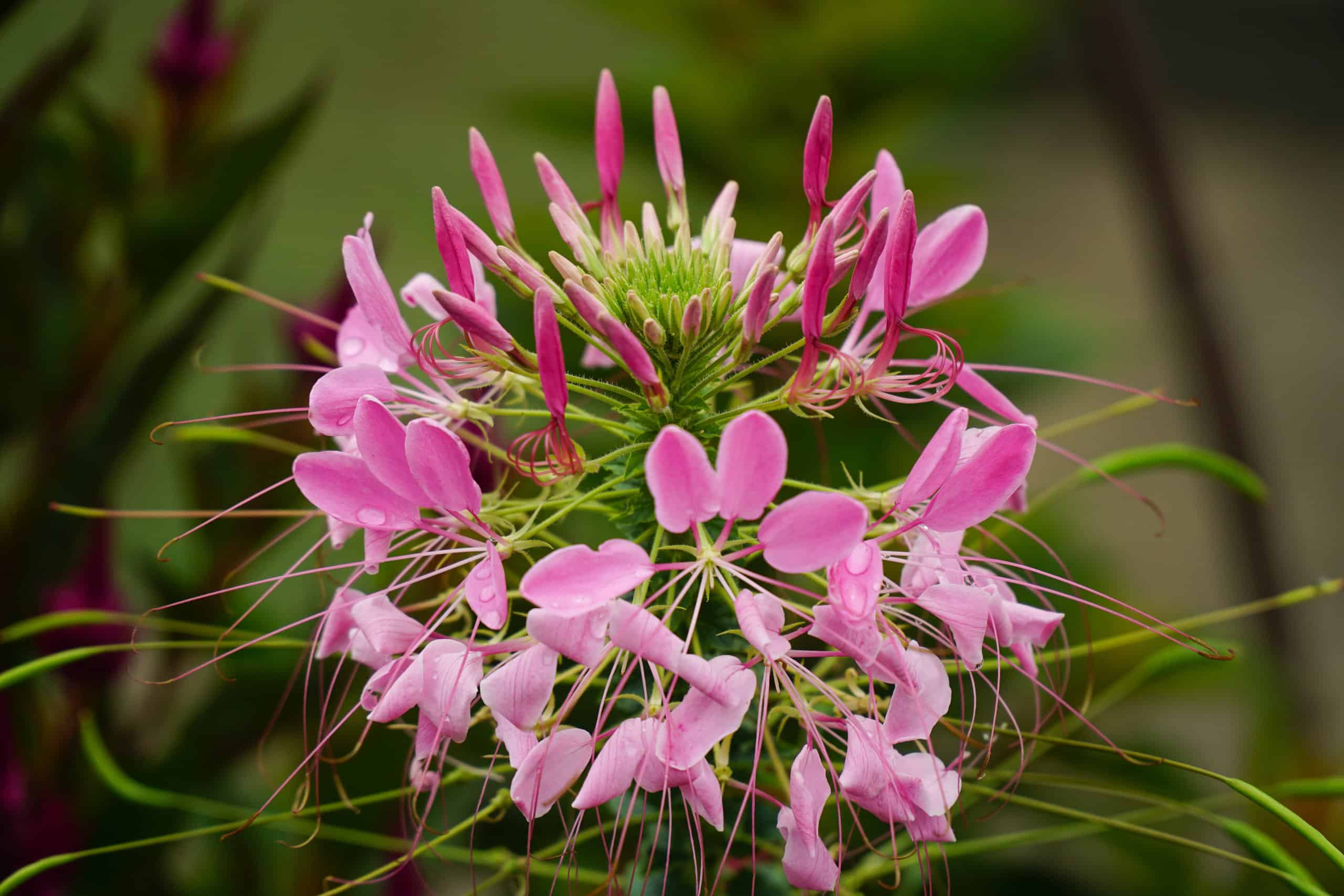Most avid gardeners start planting in the late spring after the danger of overnight frost has passed. If you got busy and fell behind on your planting schedule, fear not: you still have time. There are several annual flowers you can still plant in July. In this article, we’ll cover the types of annual flowers you can plant in July and some top tips for preparing your garden.
Let’s dig in!
Benefits of Planting Annuals in July
While July is late for planting, this approach has several benefits. Some key benefits of planting annuals in July include the following:
- Extended growing periods — late planting will ensure you have flowers later in the season after the early bloomers have faded away.
- Discounts — local garden centers may be trying to clear their inventory, offering discounts.
- Less competition — your annuals won’t be competing with early-season bloomers for nutrients or space.
- Better growth conditions — depending on your local climate, July planting could reduce the risk of late-season cold spells.
It’s important to be mindful of your local environment when planting in July. If you live in a hot, arid region, your annuals may need a bit of shade or extra water to get established.
Tips for Selecting Annuals for Your Garden
When choosing annuals to plant in your garden in July, you must be selective. Here are some key factors to consider when selecting annuals:
Sun Exposure
Every flower has its own sun preferences. Take a good look at your garden and figure out how much sunlight it receives throughout the day. Some plants flourish in full sun, while others prefer partial shade. By matching the sunlight needs of your annuals to your garden’s location, you’ll set them up for success.
Soil Drainage
Some flowers like it wet and humid, while others prefer well-drained soil to prevent their roots from getting waterlogged. Mixing these two types of plants together rarely ends well.
Grab a shovel and dig a 12-inch hole to determine your soil’s drainage. Fill it up with water and let the surrounding soil soak it in. Then, refill the hole and measure how much the water level drops each hour.
Most annuals prefer a drainage rate of 1-4 inches per hour. If it drains faster, consider mixing in some compost or organic matter. If it drains slower, you should aerate the soil or opt for plants that thrive in clay-like soil.
Soil Quality
It’s important to assess the pH level of your soil. Get a home testing kit and use the soil you dug up during the drainage test. This will help you determine whether your soil is acidic, neutral, or basic.
Most annuals prefer neutral soil, but if you find your soil is too acidic, adding limestone can help balance it out. Conversely, if your soil is alkaline or “sweet,” a touch of ground sulfur can do the trick.
If you’re feeling adventurous, you can also try the earthworm test. Grab that trusty shovel again and dig a few holes in your garden. If you find some earthworms wriggling around in the upturned soil, congratulations! Your soil is in good shape. But if they’re nowhere to be found, it might be time to add more organic matter to improve its health.
Aesthetic Considerations
Lastly, think about the aesthetic you want to achieve with your garden. Are you going for a specific theme or color scheme? Or perhaps you’re eager to attract pollinators like butterflies and bees? Consider choosing annuals that align with your vision.
You can mix and match plants with different growth rates and bloom periods to ensure a colorful display throughout summer.
Keeping these factors in mind, here are some excellent annual flowers to plant in July.
1. Cleomes
The captivating Cleome, also known as spider flowers, got their name from their spindly foliage and clusters of eye-catching blooms. These annuals bloom in delicate shades of white, pink, and purple. When they first bloom, cleomes look like weeds—be mindful not to pull them!
Cleome not only adds a touch of tropical allure but also attracts delightful pollinators like butterflies and bees. Thanks to their impressive height, they make quite a statement when planted along fences or in the back of flower beds.
Spider flowers thrive on sunlight, so ensure they have a prime spot that receives full sun throughout the day. They prefer well-draining soil and a humid environment. Cleomes are versatile and can adapt to most USDA zones as annuals but come back as perennials in USDA zones 9-11.
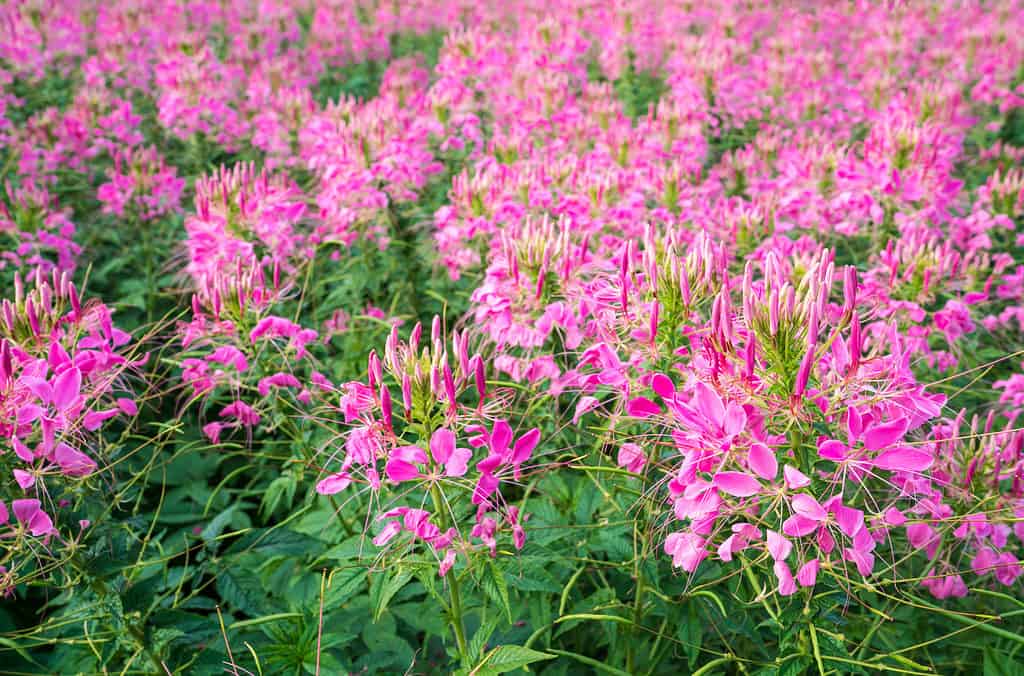
Pink Rocky Mountain bee plant, stinking clover, (Cleome serrulata).
©QBR/Shutterstock.com
2. Sunflowers
Let’s talk about the glorious sunflowers that light up our summers and carry their beauty into the fall season. These iconic blooms will steal the show, ranging from 12 inches to a staggering 12 feet in height.
When planting sunflowers, choose a sunny spot in your garden. These sun-worshippers need all the rays they can get to thrive. Make sure the soil is well-draining.
Sunflowers have deep root systems, so they need loose soil that gives them plenty of room to grow and anchor themselves. Aim for alkaline, nutrient-rich soil to provide them with the ideal conditions for their development.
If you opt for the giant varieties, it’s worth finding a sheltered area to shield them from strong winds. These majestic beauties can be pretty vulnerable to gusts, so a little protection goes a long way in keeping them standing tall and proud.
The good news is that sunflowers are versatile and can thrive in most USDA zones. Planting these beauties in July should result in blooms late into the fall!
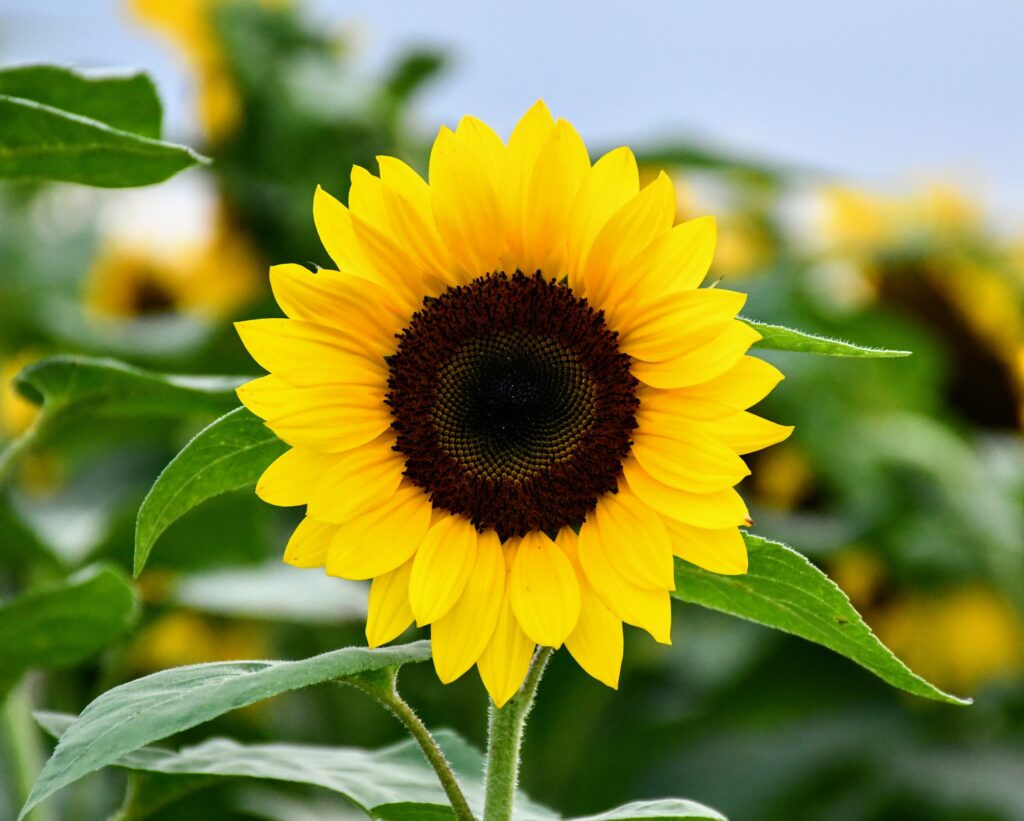
Sunny Smile sunflower.
©Elizabeth Birckhead/Shutterstock.com
3. Celosia
Celosias are feathery flowers in the Amaranth family. They’re often called cock’s comb or woolflowers due to their plume-like shapes and intricate crested varieties. Their vibrant colors range from fiery reds and oranges to soft pinks and yellows.
These sun-loving blooms thrive in bright, direct light. Make sure the soil has ample drainage to prevent waterlogging, as celosias prefer drier conditions. Loose, loamy soil is ideal for their growth.
Celosias are relatively adaptable. They can tolerate a range of pH levels, but slightly acidic to neutral soil is generally recommended. If needed, you can make adjustments by adding amendments like organic matter or lime. Celosias are also versatile when it comes to their USDA hardiness zones.
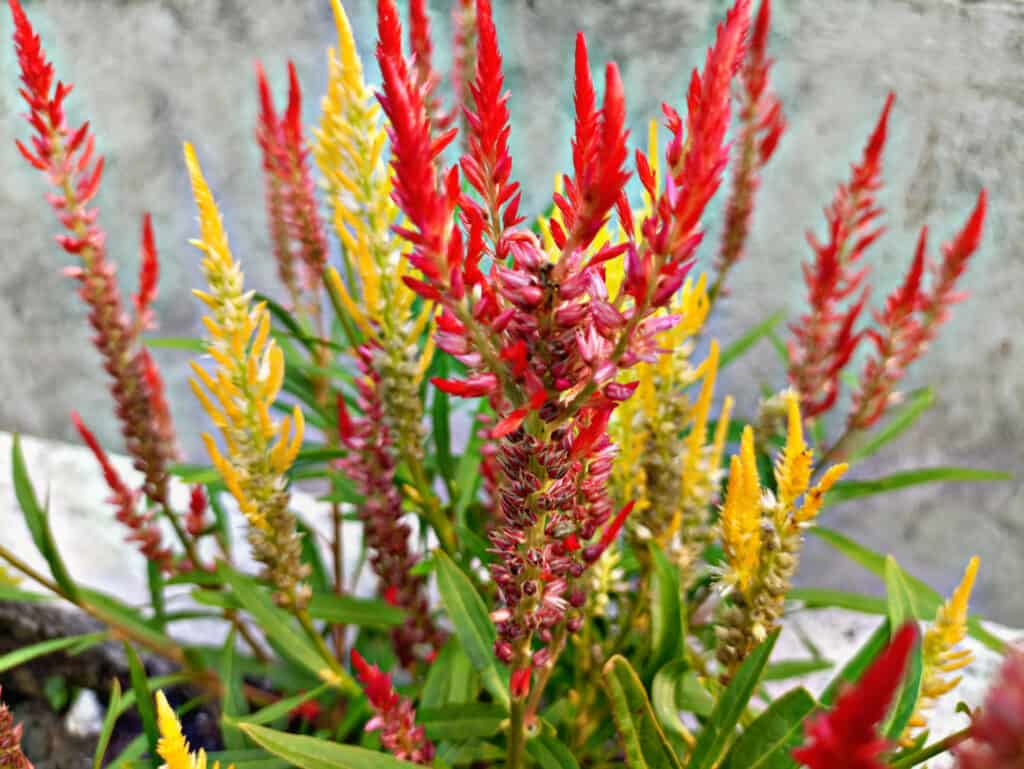
Hailing from
Africa
, Celosia is a plant that belongs to the Amaranth family.
©iStock.com/Khodar Adi Handoko
4. Vinca
Also known as periwinkles or Madagascar periwinkles, vinca blooms are sure to add a burst of color to your garden.
Vinca flowers come in various hues, including shades of pink, purple, white, and sometimes even red. With their low-growing and trailing habit, vinca flowers are perfect for ground cover, hanging baskets, or cascading over the edges of containers.
Vinca plants prefer a spot that receives full to partial sunlight. Make sure the soil is well-draining to prevent waterlogged conditions and root rot. Vinca flowers appreciate soil that’s rich in organic matter and slightly acidic to neutral in pH.
Vinca plants are known for their drought tolerance, making them a great choice for gardens in hot and dry climates. They’re also pest and deer-resistance, making them great low-maintenance options.
These versatile blooms can adapt to various USDA hardiness zones and may come back as perennials in USDA zones 9-11.

These flowers can vary by color, but they are always 5-petaled and fused in a pinwheel shape.
©Dewi Cahyaningrum/Shutterstock.com
5. Marigolds
Marigolds are known for their heat tolerance and fall-like colors, making them a perfect late-season addition to the garden.
While their fragrance might not rival that of roses or honeysuckle, it serves a purpose: marigolds are excellent companions for deterring pests from your flower or vegetable garden.
As members of the daisy family, marigolds are a perfect choice for planting in July. They crave the warmth of full sunlight, so find a sunny spot in your garden. Marigolds are quite adaptable when it comes to soil pH, and they can tolerate slightly acidic conditions.
Once these charming flowers have bloomed, maintaining high humidity levels can help keep them happy. Watering them daily, preferably in the morning or evening to avoid shocking the plants, will provide them with the moisture they need.
Remember to deadhead the marigold blooms to encourage continuous growth throughout the season. Marigolds can thrive in USDA hardiness zones 3-11, making them suitable for various regions.

African Marigolds are known for their heat tolerance and fall-like colors.
©FunFamilyRu/Shutterstock.com
6. Nicotiana
Nicotiana, also known as a flowering tobacco plant, is a unique addition to a late-season garden. This lengthy bloomer often produces flowers well into the fall in warm climates. It’s native to South America, making it resilient to July heat.
With delicate five-point petals growing in clusters, Nicotiana comes in many shades of pink, white, purple, and red. This fragrant bloom is reminiscent of jasmine, adding a subtle aroma to liven your garden.
Plant nicotiana in full sunlight to partial shade, particularly in warmer climates. Nicotiana is used to some shade coverage in its tropical native habitat.
Nicotiana can handle a range of soil types but thrives with plenty of organic matter. Plant in well-drained soil and water daily in the morning or evenings to prevent shock. This tropical plant prefers USDA zones 9-11 but can be planted as an annual in most zones after the risk of frost has passed.
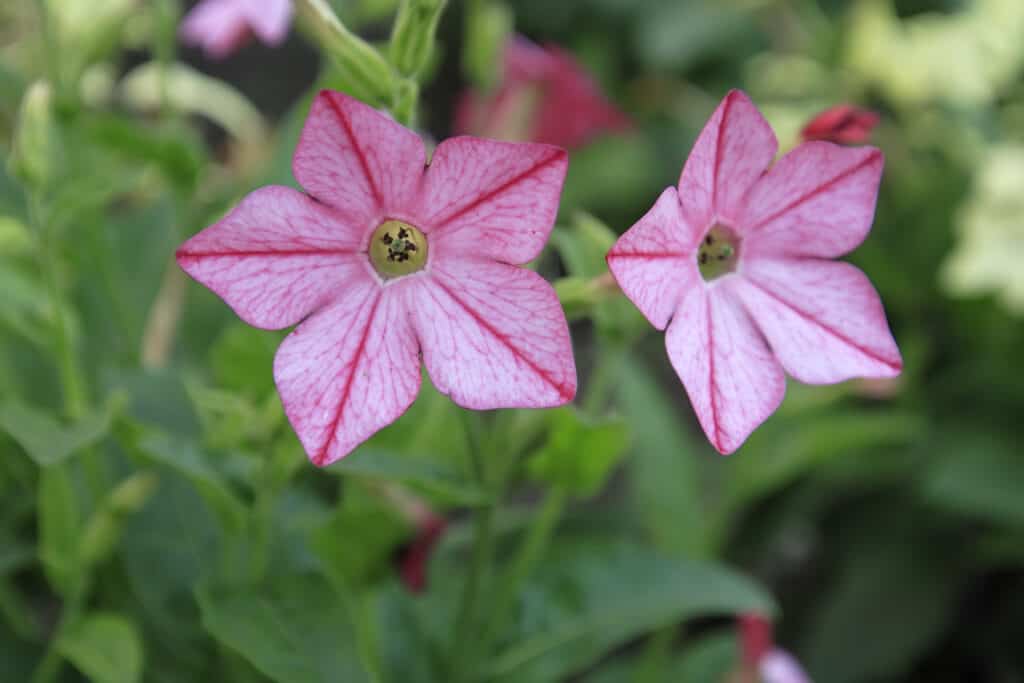
Flowering tobacco plants are a lovely addition to a summer garden.
©iStock.com/hbak
7. Gazanias
Gazanias, also known as African daisies, are renowned for their drought tolerance and long blooming period. When you plant them in July, you can expect these resilient and beautiful blooms to continue growing into the late fall.
Gazanias boast a daisy-like appearance with vibrant petals in a stunning combination of orange and yellow hues. The petals have a unique pattern with contrasting colors radiating from the center, creating a captivating display of color and texture.
This eye-catching bloom prefers full sun exposure and neutral to acidic soil to replicate its South African origins. Gazanias perform best in soil with a high sand content and infrequent watering. They are planted as annuals in most USDA zones but will come back as perennials in USDA zones 9-11.
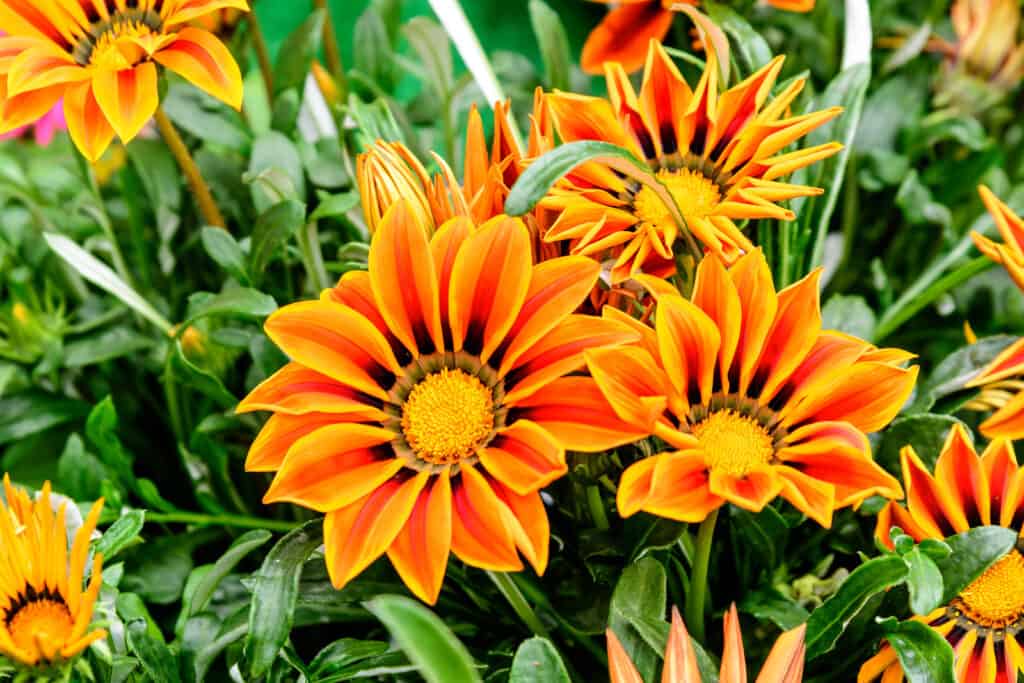
Gazanias, also known as African daisies, are renowned for their drought tolerance and long blooming period.
©iStock.com/Cristina Ionescu
8. Tithonia
Also known as the Mexican sunflower, tithonia is a heat-loving bloom from Mexico that performs well when planted during peak summer seasons. As this bloom takes a few weeks to germinate, you can expect to have blossoms into the late fall.
The tithonia closely resembles a daisy in shape and structure but boasts vibrant orange to red petals against a bright yellow center. The vibrant colors and light fragrance are a pollinator favorite, attracting bees and even the occasional monarch butterfly!
Plant this southern beauty in full sunlight and well-draining, acidic to neutral soil. Water infrequently, monitoring the blooms for signs of drooping during drought seasons.
Like many July annuals, tithonia can grow in most USDA zones but comes back as a perennial in USDA zones 9-11.
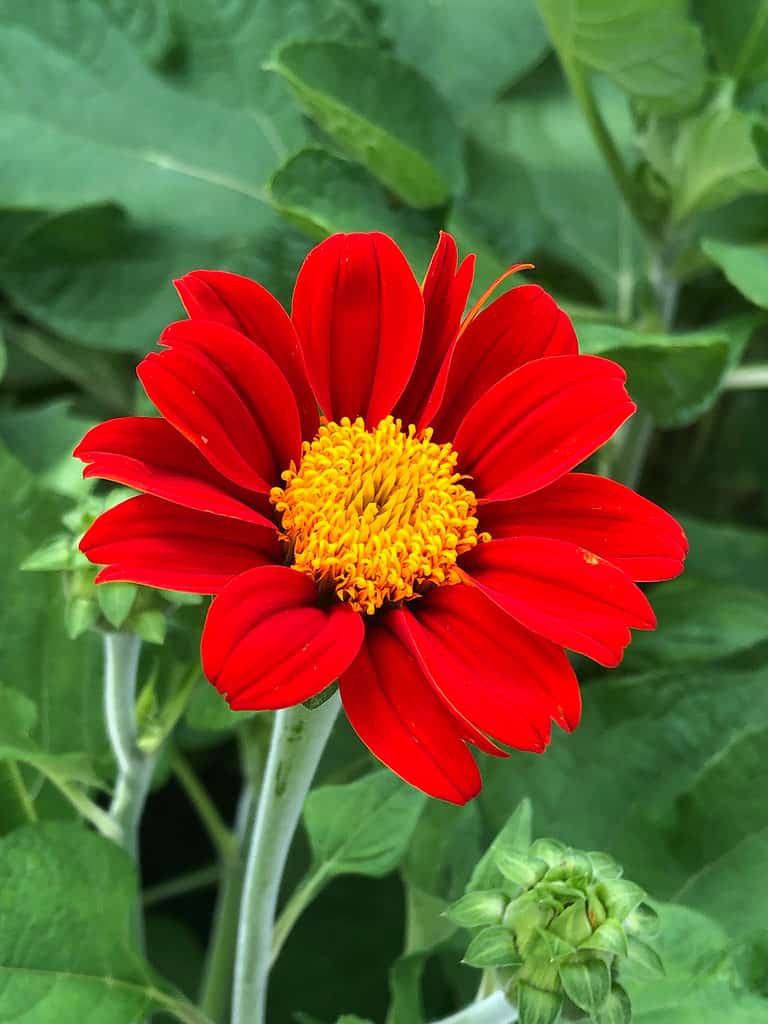
The Mexican sunflower comes in shades of vibrant orange to red.
©Penny Photo/Shutterstock.com
9. Portulacas
Portulacas, commonly known as moss roses, are tropical plants. Gardeners often use portucalas as ground cover, bringing a burst of vibrant colors resembling delicate wild roses. Notably, Portulacas exhibit a unique characteristic as flowering succulents, adding a touch of diversity to your garden.
Moss rose plants thrive in full sunlight, making them ideal for areas with ample sunshine. These resilient blooms have the remarkable ability to flourish in dry and challenging patches where many other plants struggle to survive. As a ground-covering plant, portulacas stay where they are planted without invasive spreading tendencies.
When it comes to planting, directly sow portulaca seeds into the soil in July to maximize their growing season. These resilient succulents prefer neutral, well-draining soil but can tolerate slightly acidic conditions if necessary.
These plants have adapted to thrive in arid environments and, as a result, require minimal watering. Once established, they rarely need additional moisture. This quality and their ability to tolerate dry conditions make Portulacas an excellent choice for low-maintenance summer gardens.
Portulacas are highly adaptable and can grow in a wide range of USDA hardiness zones.
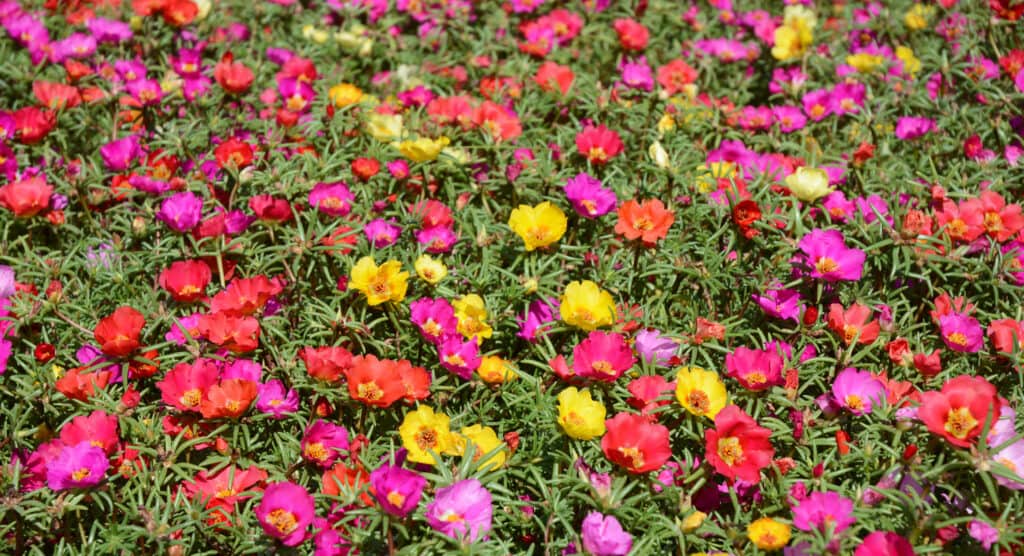
Colorful flowerbed of hogweed or Portulaca also known as moss roses.
©iStock.com/Lex20
10. Coleus
While not a flowering plant, Coleus plants come in a variety of striking hues, ranging from bold and vibrant to soft and subtle. Their leaves exhibit stunning patterns and can be found in shades of green, purple, red, and more.
Coleus plants prefer a spot with partial shade or filtered sunlight. While they can tolerate some direct sunlight, too much sun exposure can cause their colors to fade. Take care to note the species of coleus, as some are cultivated for full sun exposure.
Coleus thrives in well-draining and fertile soil. They appreciate consistent moisture, so make sure to water them regularly to keep the soil moist but not waterlogged.
Pinching back the tips of the stems helps promote bushier growth, and removing any flowers that appear encourages the plant to focus its energy on foliage development. Coleus grows in any USDA zone as an annual but will return as a perennial in USDA zones 9-11 and can be overwintered indoors as a potted plant.

Coleus plant leaves come in many colors, including pink, red, and green.
©EQRoy/Shutterstock.com
11. Mallow
Mallows, often known as cheese weeds for their pods’ resemblance to cheese wheels, are a natural re-seeder that will thrive into the fall when planted in July and deadheaded regularly.
Often confused with Hollyhocks (to which they’re closely related), mallow flowers grow up a thick stem in colorful clusters. You can get this lovely bloom in shades of pink, white, or purple. One of the most popular cultivars, ‘Vulcan,’ has a bold magenta shade with deep fuschia stripes.
Plant in well-drained soil with plenty of organic matter in a spot that gets ample sunlight. Consider planting in a sheltered area with stakes or a trellis to support the heavy stalks.
This resilient flower grows in USDA zones 3-8 and may come back as a perennial in warmer climates.
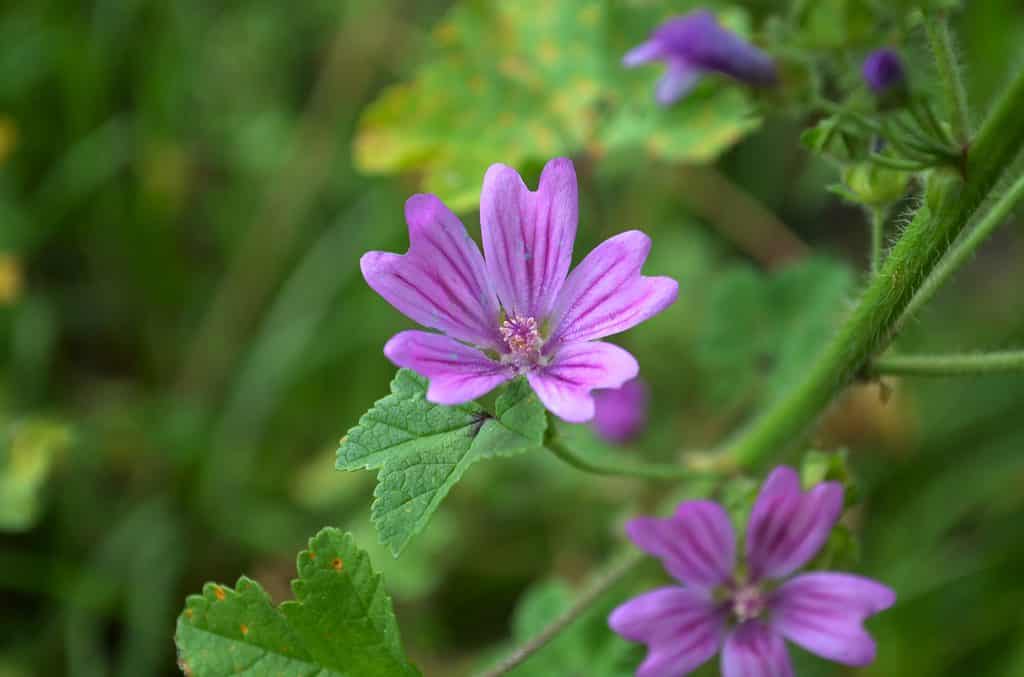
Mallow is often confused with Hollyhocks.
©Lartos_82/Shutterstock.com
Caring for Annuals in July
Caring for your July annuals is all about understanding their individual needs and providing tailored care.
Being proactive in your care approach is key. Before planting your June annuals, it’s beneficial to test your soil and add nutrients accordingly. Consider grouping plants together based on their watering and fertilization requirements. This way, you can ensure optimal growth for each plant.
When it comes to most annuals, deadheading is a preferred practice for promoting continuous growth. By removing spent flowers, you encourage the plant to produce new blooms, keeping your garden vibrant and lush.
Summary of 11 Stunning Annual Flowers You Can Still Plant in July
| Rank | Annual Flower |
|---|---|
| 1 | Cleomes |
| 2 | Sunflowers |
| 3 | Celosia |
| 4 | Vinca |
| 5 | Marigolds |
| 6 | Nicotiana |
| 7 | Gazanias |
| 8 | Tithonia |
| 9 | Portulacas |
| 10 | Coleus |
| 11 | Mallow |
Thank you for reading! Have some feedback for us? Contact the AZ Animals editorial team.

